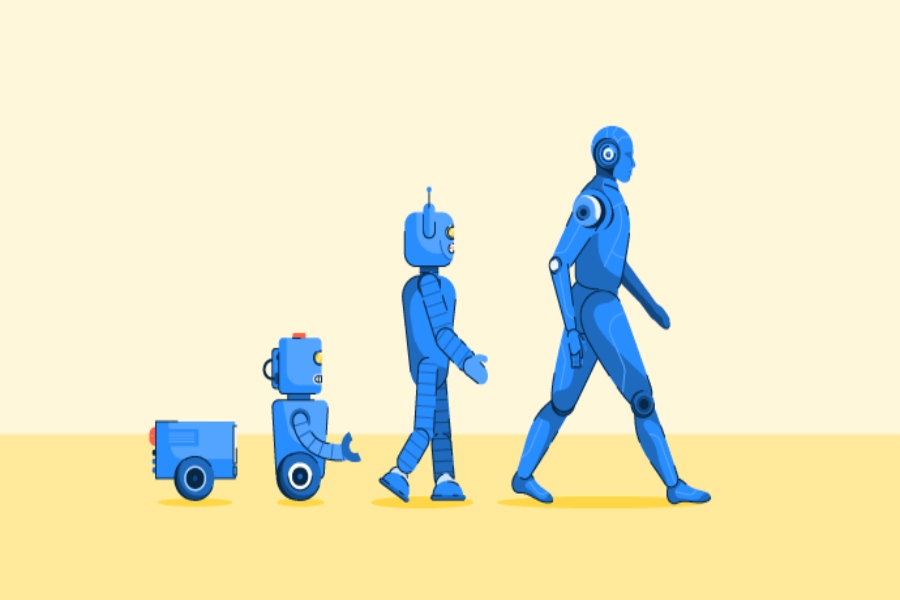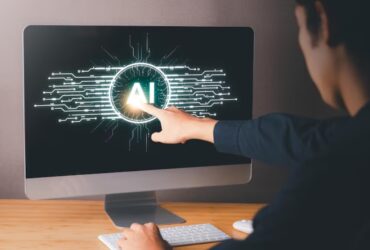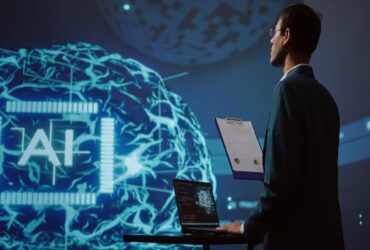The journey of artificial intelligence (AI) has been long and revolutionary, with its development taking center stage in technology, shaping industries and societies alike. When was the first AI robot made? The concept of robots and AI may seem modern, but their roots go back decades, sparking imagination and innovation. The first AI-powered robots were created to perform tasks autonomously, pushing the boundaries of human capabilities. From the early conceptual machines to today’s sophisticated AI robots, these advancements have laid the foundation for what we now call intelligent robotics.
This article will take you through the milestones of AI robot creation, from the initial concepts to the pivotal moment when the first AI robot came to life. We will also explore how AI robots have evolved since their inception and what this means for the future of artificial intelligence. Let’s dive into the fascinating history of AI robotics and uncover when the first AI robot was made.
When was the first AI robot made?
The first AI robot was made in 1972, known as Shakey. It was developed by SRI International and was the first machine to combine AI and robotics, allowing it to make decisions and navigate environments autonomously. Shakey’s creation marked a significant leap in both AI and robotics, laying the groundwork for future intelligent robots.
The History of AI Robotics
The development of the first AI robot didn’t happen overnight. It was the result of years of research in artificial intelligence, robotics, and computer science. But before understanding when the first AI robot was made, it’s important to look at the history that led to its development.
Early robotic concepts date back to ancient times when inventors dreamed of creating autonomous machines to perform tasks. However, the real foundation of AI robotics was laid in the mid-20th century, with scientists working on computers capable of mimicking human reasoning. These early AI systems were basic and relied on preprogrammed instructions, lacking the advanced decision-making skills of modern AI.
In the 1950s and 1960s, research in artificial intelligence took off. The development of AI algorithms, such as decision trees and neural networks, gave machines the ability to “learn” from data. This was a turning point for robotics, as it allowed for the integration of AI into physical machines, setting the stage for the birth of the first AI robot.
Finally, in 1972, SRI International developed the world’s first AI robot, known as Shakey. Shakey could navigate rooms, recognize objects, and make decisions independently. This marked the beginning of AI-powered robots, combining artificial intelligence with robotics for the first time in history.
The Role of Shakey in AI Robotics Evolution
H3: Shakey: The First AI Robot
In 1972, Shakey became the first robot to combine AI with robotics. Created by SRI International, Shakey could analyze its surroundings and make decisions, unlike previous robots that followed strict programming. Shakey was equipped with cameras and sensors, enabling it to perceive the environment, navigate obstacles, and complete tasks like pushing objects. Shakey’s AI allowed it to process information and take action without human intervention.
H3: Shakey’s Impact on Robotics
Shakey represented a monumental leap in robotics, as it was the first machine to make decisions based on AI algorithms. Before this, robots were limited to repetitive tasks, but Shakey was able to adapt to its surroundings. Shakey’s decision-making capabilities demonstrated the potential of AI in real-world applications, opening doors for future developments in autonomous machines.
H3: Key Features of Shakey
Shakey’s groundbreaking features included its ability to:
- Navigate autonomously using sensors and cameras
- Make decisions without human input
- Recognize and interact with its environment
- Perform simple tasks like opening doors and moving objects
H3: Shakey’s Limitations
Despite its advanced capabilities, Shakey had limitations. It was slow and required significant computational power to make decisions. Shakey could only operate in highly controlled environments, limiting its real-world applications. However, it served as a stepping stone for more advanced AI robots.
H3: Shakey’s Legacy
Shakey’s creation laid the foundation for future AI-powered robots. Its combination of AI and robotics has inspired countless innovations in the field, influencing the development of modern robots like autonomous drones, self-driving cars, and industrial robots.
Key Milestones in AI Robotics Development
AI robotics has gone through significant milestones since the creation of Shakey. These advancements highlight how AI has become integral to modern robotics.
- 1956: The Birth of AI
The term “artificial intelligence” was coined during the Dartmouth Conference, marking the official birth of AI as a field of study. - 1966: ELIZA, the First Chatbot
Though not a robot, ELIZA was an early AI program that could simulate human conversation, influencing the development of AI in interactive systems. - 1972: Shakey’s Debut
Shakey became the first AI robot, demonstrating the integration of AI algorithms into a robotic body. - 2000: Honda’s ASIMO
ASIMO was one of the most advanced humanoid robots, showcasing the potential of AI in physical tasks and human interaction. - 2016: Sophia the Robot
Sophia was introduced by Hanson Robotics, capable of mimicking human expressions and participating in conversations. Sophia represents the latest in AI robot technology.
Modern AI Robotics and Their Capabilities
Today, AI robots are far more advanced than Shakey, and their capabilities are impressive. AI robots now serve in various sectors, from healthcare to manufacturing.
Modern AI robots can learn and adapt, improving their efficiency through machine learning algorithms. They are also capable of:
- Recognizing faces and emotions
- Interacting with humans in natural language
- Performing complex tasks autonomously, such as assembling products in factories
- Navigating unknown environments, such as drones surveying disaster areas
AI robots have become essential in industries like healthcare, where they assist in surgeries, and in customer service, where robots like Pepper interact with customers. These robots are equipped with sensors, cameras, and AI software, enabling them to function efficiently in dynamic environments.
The Future of AI Robotics
H3: AI Robots in Everyday Life
AI robots are expected to become more integrated into everyday life. From personal assistants to smart home devices, AI-powered robots will help automate tasks, making life more convenient for humans.
H3: AI Robotics in Industry
In industries such as manufacturing and logistics, AI robots are likely to replace repetitive manual labor. This will lead to increased efficiency, reduced costs, and more precise production processes.
H3: Ethical Concerns
As AI robots become more autonomous, ethical concerns around their usage are growing. These include issues such as privacy, job displacement, and the moral implications of AI decision-making.
H3: AI and Human Collaboration
AI robots are not meant to replace humans but to work alongside them. The collaboration between humans and AI is set to improve productivity and innovation in various fields.
Conclusion
In conclusion, when was the first AI robot made? Shakey, developed in 1972, was the first AI-powered robot, marking a significant milestone in robotics and AI history. Since then, AI robots have evolved from simple machines capable of basic tasks to sophisticated systems that can learn, adapt, and collaborate with humans. The future of AI robotics promises even greater advancements, with AI robots becoming integral to industries and everyday life. Understanding the history and evolution of AI robots helps us appreciate their potential to shape the future.
FAQ’s
Q. When was the first AI robot made?
A. The first AI robot, Shakey, was created in 1972 by SRI International.
Q. Who developed the first AI robot?
A. SRI International developed the first AI robot, Shakey.
Q. What is the significance of Shakey the robot?
A. Shakey was the first robot to combine AI with robotics, allowing it to navigate and make decisions autonomously.
Q. How have AI robots evolved since Shakey?
A. Since Shakey, AI robots have evolved to perform more complex tasks, from interacting with humans to learning through AI algorithms.
Q. What are some modern examples of AI robots?
A. Modern AI robots include Sophia the Robot, ASIMO, and industrial robots used in manufacturing and healthcare.












































Leave a Reply